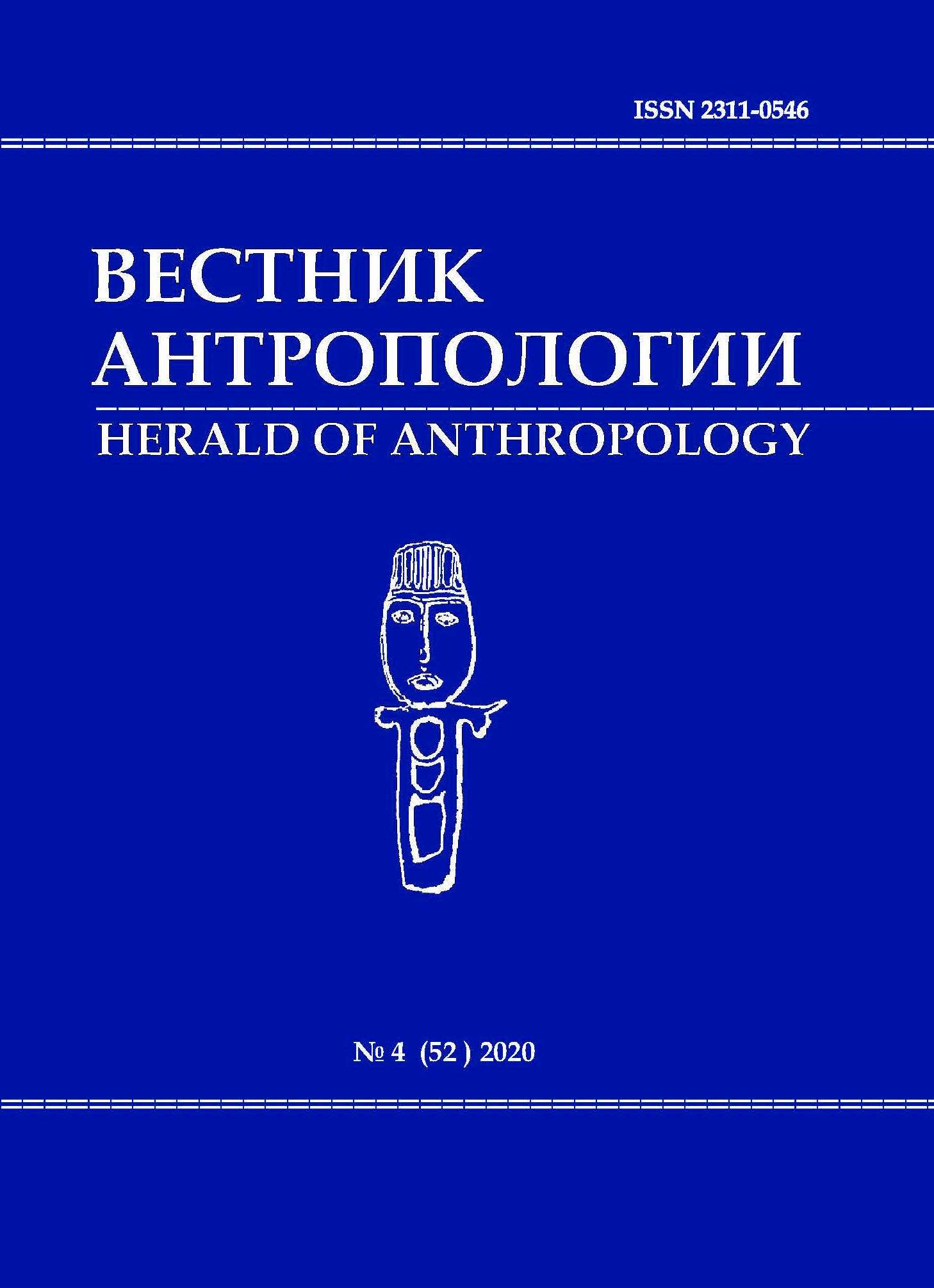“There are taboos for museums”: prohibitive practices in the culture of Russian museums
DOI: 10.33876/2311-0546/2020-52-4/125-135
Keywords:
museum, museum anthropology, taboos, bans, corporate culture, anthropology of organizationsAbstract
This article analyzes the institute of museum taboos. The relevance of this study is due to several factors, primarily the development of relationships between the museum and the visitor in the last three decades. The prohibitions also influence the shaping of professional ethics, and, consequently, the status of the profession. The main aim of this work was to show the ambiguity of the contemporary taboos in Russian museums and their impact on the functioning of the museum itself.
The research was mainly based on a survey of museum employees and analysis of the systems of prohibitions in museums of the Russian Federation. The main conclusion of the research is as follows: the contemporary system of museum taboos was formed not only by attitude to the museum as a sacred space, but also by the culture of Soviet prohibitive practices. Part of the professional community is aware of the problems with the quantity and quality of prohibitions, however, in general, the discussion of prohibitions is taboo itself. This entails a number of problems, the key one being the absence of a unified system of standards in working with a visitor, which is a cause of potential conflicts. The study showed that in the professional museum community there is still no consensus not only on external prohibitions, but also on basic issues of internal corporate culture.
References
- Arhipova, A. and A. Kirzyuk. 2020. Opasnye sovetskie veshchi: Gorodskie legendy i strahi v SSSR. [Dangerous Soviet things: Urban legends and fears in the USSR]. Moscow: Novoe literaturnoe obozrenie.
- Dolak, J. and P. Šobaňova. 2018. Museum presentation. Palacki University Olomouc. 379 p.
- Duncan, C. 1995. Civilizing Rituals: Inside Public Art Museums (Re Visions: Critical Studies in the History and Theory of Art). Routledge.
- Grin'ko, I.A. 2017. Yumor v muzejnom prostranstve. [Humor in the museum space]. Observatoriya kul'tury. Vol. 14 (3) :315–321.
- Grin'ko, I.A. 2018. V poiskah zinfandelya. [In Search of the Zinfandel]. Muzej. 11:33–36.
- Grin'ko, I.A. and M.B. Gnedovskyi Muzejnye standarty: mezhdunarodnyj opyt: kollektivnaya monografiya. [Museum standards: international experience: a collective monograph], edited by I.A. Grin'ko; M.B. Gnedovskyi. Moscow: Perspektiva.
- Idema, J. 2016. Kak hodit' v muzej. [How to visit an art museum]. Moscow: Ad Marginem Press.
- Larceva, L. 2018. Pravomernost' vzimaniya platy za fotos"emku v muzee. [Legality of charging fees for photographing in a museum]. Uchrezhdeniya kul'tury i iskusstva: buhgalterskij uchet i nalogooblozhenie 4:13–15.
- Mensh, P. van. 2014. Etika i muzeologiya [Ethics and museology]. Voprosy muzeologii 1 (9): 128–138.
- Piotrovskij, M.B. 2016. Dlya muzeev net tabu. 50 statej za 10 let. [There are no taboos for museums. 50 articles in 10 years]. Petersburg: Arka.
- Pokrovskaya, E.A. and E.V. Kudinova. 2011. Instrukcionno-zapretitel'nye nadpisi kak instrument ideologicheskogo vozdejstviya (na materiale russkogo i ital'yanskogo yazykov). [Instructions and prohibitions as an instrument of ideological influence (based on the material of the Russian and Italian languages)]. Politicheskaya lingvistika 2: 43–48.
- Shalaeva, G.P. 2009. Pravila povedeniya dlya vospitannyh detej. [Rules of conduct for raised children]. Moscow: AST.
- Shevtsova,A. and I.A. Grinko. 2019. Muzei i sovetskaya satira [Museums and Soviet satire]. Chelovek i kul'tura 2: 80–96. https://nbpublish.com/library_read_article.php?id=28444 (accessed 04.04.2020). DOI: 10.25136/2409-8744.2019.2.28444
- Shola, T.S. 2013. Vechnost' zdes' bol'she ne zhivet. Tolkovyj slovar' muzejnyh grekhov. [Eternity doesn’t live here anymore. Dictionary of the Museum Sins]. Tula: Muzej-usad'ba L.N. Tolstogo «YAsnaya polyana».
- Simon, N. 2010. Participatory museum. Santa Cruz, Museum 20.
- Skobel'cyna, A.S. and A.P. Sharuhin. 2018. Tekhnologiya i organizaciya informacionno-ekskursionnoj deyatel'nosti. [Technology and organization of information and excursion activities]. 2nd Moscow: Yurajt.
- Sorokin, V.N. 2013. Kreativnye industrii i muzei: uchebnoe posobie. [Creative industries and museums: a manual] / Min-vo obrazovaniya i nauki RF, Novosib. gos. ped. un-t. Novosibirsk: Izdatel’stvo NGPU.
- Taboo In Encyclopedia of social and cultural anthropology. 2002. Ed. by Alan Barnard and Jonathan Spencer. London: Routledge.
- Utekhin, I.V. 2012. Mesto dejstviya. Publichnost' i ritual v prostranstve postsovetskogo goroda. [ Publicity and ritual in the space of the post-Soviet city]. Moscow: Strelka Press.
- Wright, C. «A devil’s engine»: Photography and spirits in the Western Solomon Islands. Visual Anthropology: Published in cooperation with the Commission on Visual Anthropology 21: 364–380.





















